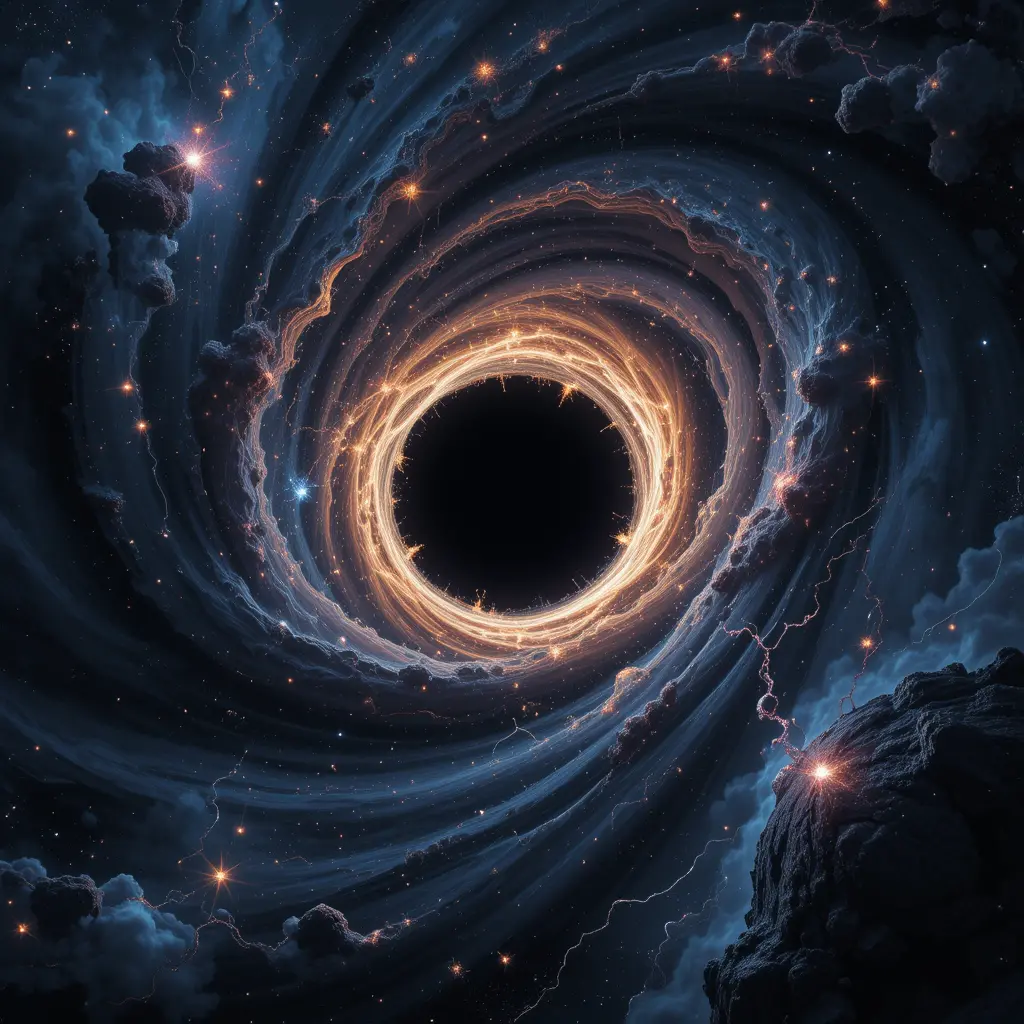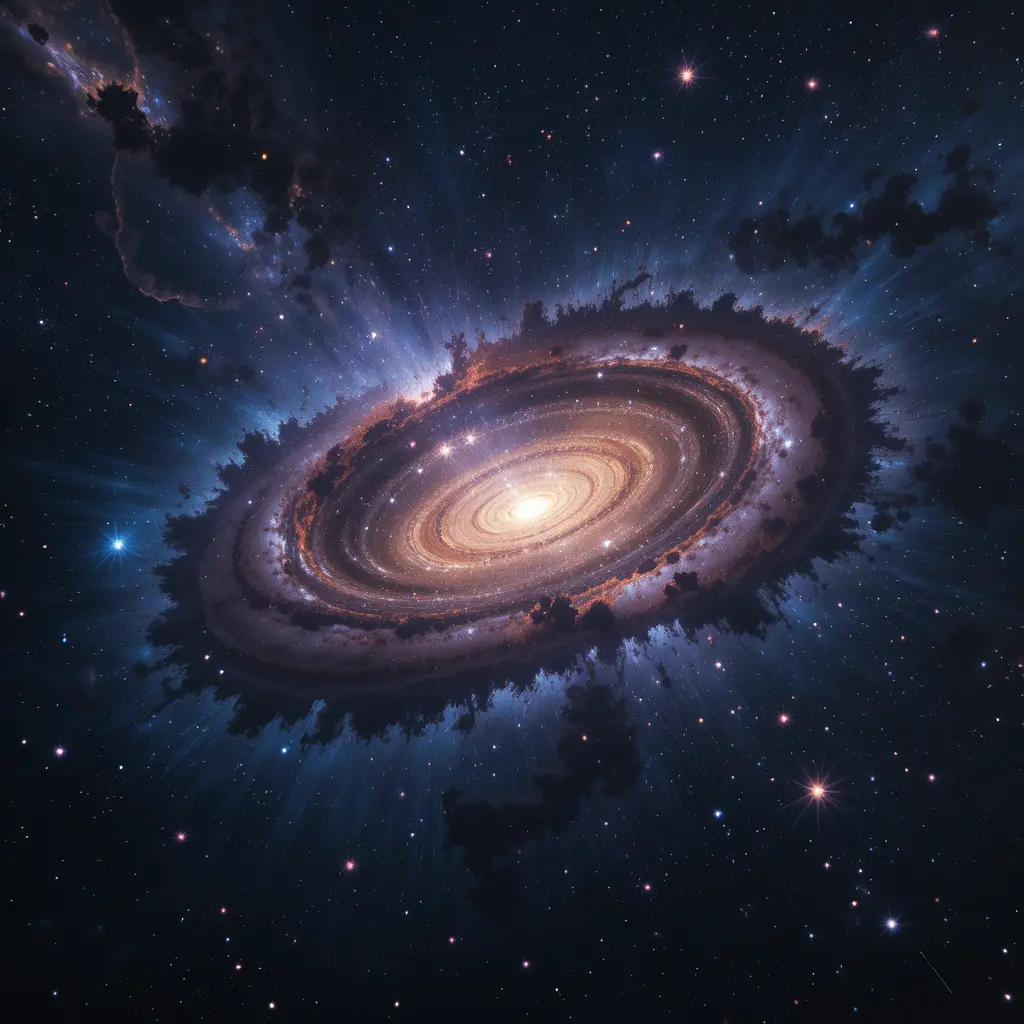Black holes captivate the imagination with their mysterious nature and immense power. These cosmic phenomena challenge our understanding of physics and the universe. Scientists study black holes to uncover the secrets of space and time. This article explores the formation, characteristics, and significance of black holes. Join us as we delve into the enigma of these fascinating celestial objects.
What Are Black Holes?
Black holes have always fascinated me. They are one of the most mysterious and intriguing phenomena in the universe. Imagine a place where gravity is so strong that nothing, not even light, can escape. This is the essence of a black hole. As an astrophysicist, I find the concept both terrifying and awe-inspiring. It’s like a cosmic vacuum cleaner, sucking in everything around it.
The Nature of Black Holes
At their core, black holes are regions in space where the gravitational pull is so intense that it warps the fabric of space-time. This happens when a massive star collapses under its own gravity at the end of its life cycle. The result is a singularity, a point of infinite density. To put it in perspective, imagine compressing the mass of the Sun into a sphere just a few kilometers across. That’s the kind of density we’re talking about.
Understanding black holes: the enigma of space is not just about their formation. It’s also about their impact on the surrounding universe. They can influence the orbits of nearby stars and even galaxies. Some black holes are surrounded by disks of gas and dust, which heat up and emit X-rays as they spiral inward. This is how we often detect them, despite their invisibility.
In my early days of research, I remember staring at data from a telescope, trying to comprehend the enormity of what I was seeing. It was humbling. Black holes challenge our understanding of physics and push the boundaries of what we know about the universe. They remind us of how much there is still to learn.
The Formation of Black Holes
Black holes are one of the most fascinating phenomena in the universe. Their formation is a process that continues to intrigue scientists and enthusiasts alike. As an astrophysicist, I find the journey of a star to becoming a black hole both awe-inspiring and humbling. It’s like watching a grand cosmic play unfold, where the end is both a mystery and a revelation.
The Life Cycle of a Star
Stars, much like living beings, have a life cycle. They are born, they live, and eventually, they die. A star’s mass plays a crucial role in determining its fate. When a massive star exhausts its nuclear fuel, it can no longer support itself against gravitational collapse. This is where the magic happens. The core collapses under its own gravity, leading to the formation of a black hole. It’s a dramatic end, akin to a supernova explosion, which is both destructive and beautiful.
Personal Reflections on Black Holes
In my years of studying black holes, I’ve often compared them to whirlpools in the ocean. Just as a whirlpool draws everything into its center, a black hole pulls in matter and light, never to be seen again. This analogy helps me, and hopefully others, to grasp the concept of these cosmic giants. Understanding Black Holes: The Enigma of Space is not just about scientific facts; it’s about embracing the unknown and the thrill of discovery. I remember my first encounter with a black hole simulation. It was both terrifying and exhilarating, much like standing on the edge of a cliff, peering into the abyss.
The Role of Black Holes in the Universe
Black holes are fascinating cosmic entities that play a crucial role in the universe. They are not just mysterious voids but are essential in shaping galaxies and influencing the cosmic environment. As an astrophysicist, I find the study of black holes both challenging and rewarding. Their immense gravitational pull affects everything around them, making them a key player in the cosmic dance.
Galactic Architects
Black holes act as galactic architects. They help in the formation and evolution of galaxies. Imagine a black hole as a cosmic anchor, holding the galaxy together. Without them, galaxies might not have the structure we observe today. For instance, the supermassive black hole at the center of the Milky Way, known as Sagittarius A*, plays a pivotal role in maintaining the galaxy’s stability.
In my early research days, I was amazed to learn how black holes can influence star formation. Their gravitational forces can compress gas clouds, triggering the birth of new stars. This process is like a cosmic recycling system, where black holes contribute to the creation of new celestial bodies.
Cosmic Recycling
Black holes also participate in a cosmic recycling process. When stars get too close, they can be torn apart, and their material is absorbed by the black hole. This process releases energy, which can be observed as bright flares. It’s a reminder of the dynamic and ever-changing nature of the universe.
Understanding Black Holes: The Enigma of Space is not just about unraveling mysteries. It’s about appreciating the intricate balance they maintain in the universe. Their role is both destructive and creative, a duality that continues to captivate scientists and enthusiasts alike.
Conclusion
As we reach the end of our journey into the cosmos, the mysteries of black holes continue to captivate our imagination. These celestial phenomena, with their immense gravitational pull, challenge our understanding of the universe. They are like cosmic vacuum cleaners, pulling in everything that comes too close. Yet, they also hold the key to some of the most profound questions in astrophysics.
The Enigma of Space
Black holes are not just scientific curiosities; they are gateways to understanding the very fabric of space and time. Imagine a whirlpool in a river, where the water spirals into a deep, unseen abyss. This is akin to how black holes operate in the vast ocean of space. As an astrophysicist, I find it fascinating how these entities can warp time, making it slow down or even stop. It’s like a science fiction story, but it’s real.
In my early days of research, I remember staring at a computer simulation of a black hole. It was mesmerizing, watching the light bend and twist around it. This experience was a reminder of how much we still have to learn. Understanding Black Holes: The Enigma of Space is not just about equations and theories; it’s about embracing the unknown and daring to explore it.
In conclusion, black holes are more than just voids in space. They are a testament to the universe’s complexity and beauty. They remind us of our smallness and our potential for discovery. As we continue to study these enigmatic objects, we inch closer to unraveling the secrets of the cosmos. And who knows? Perhaps one day, we will fully understand the enigma of space.






